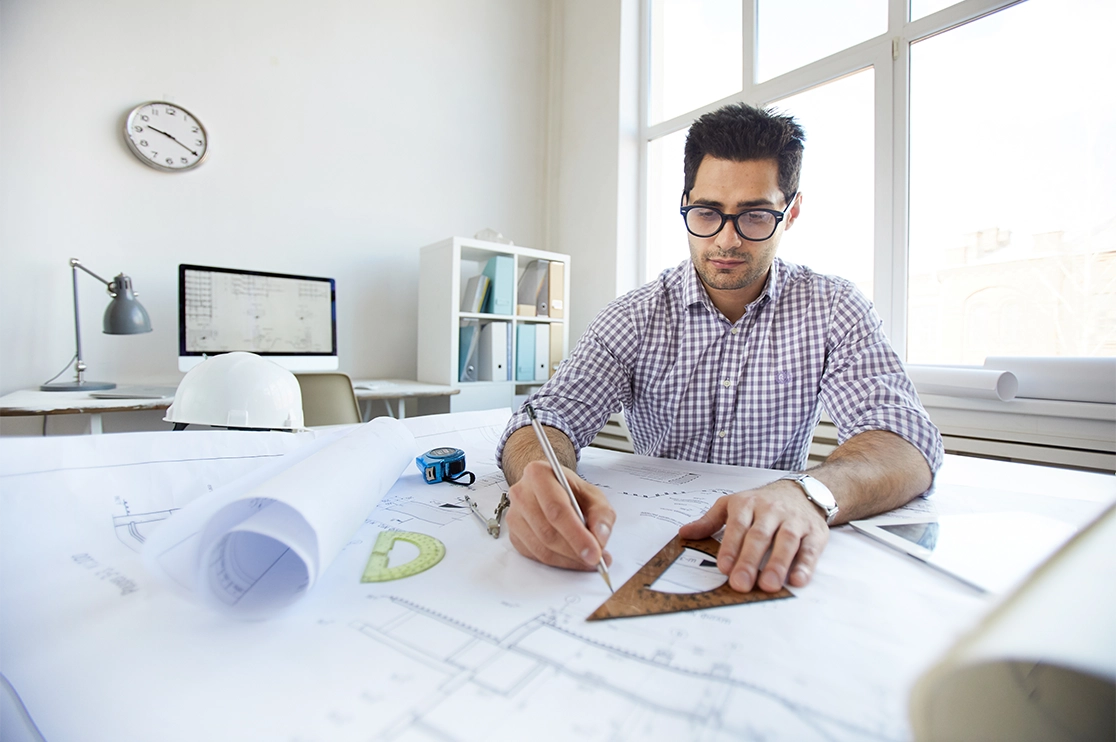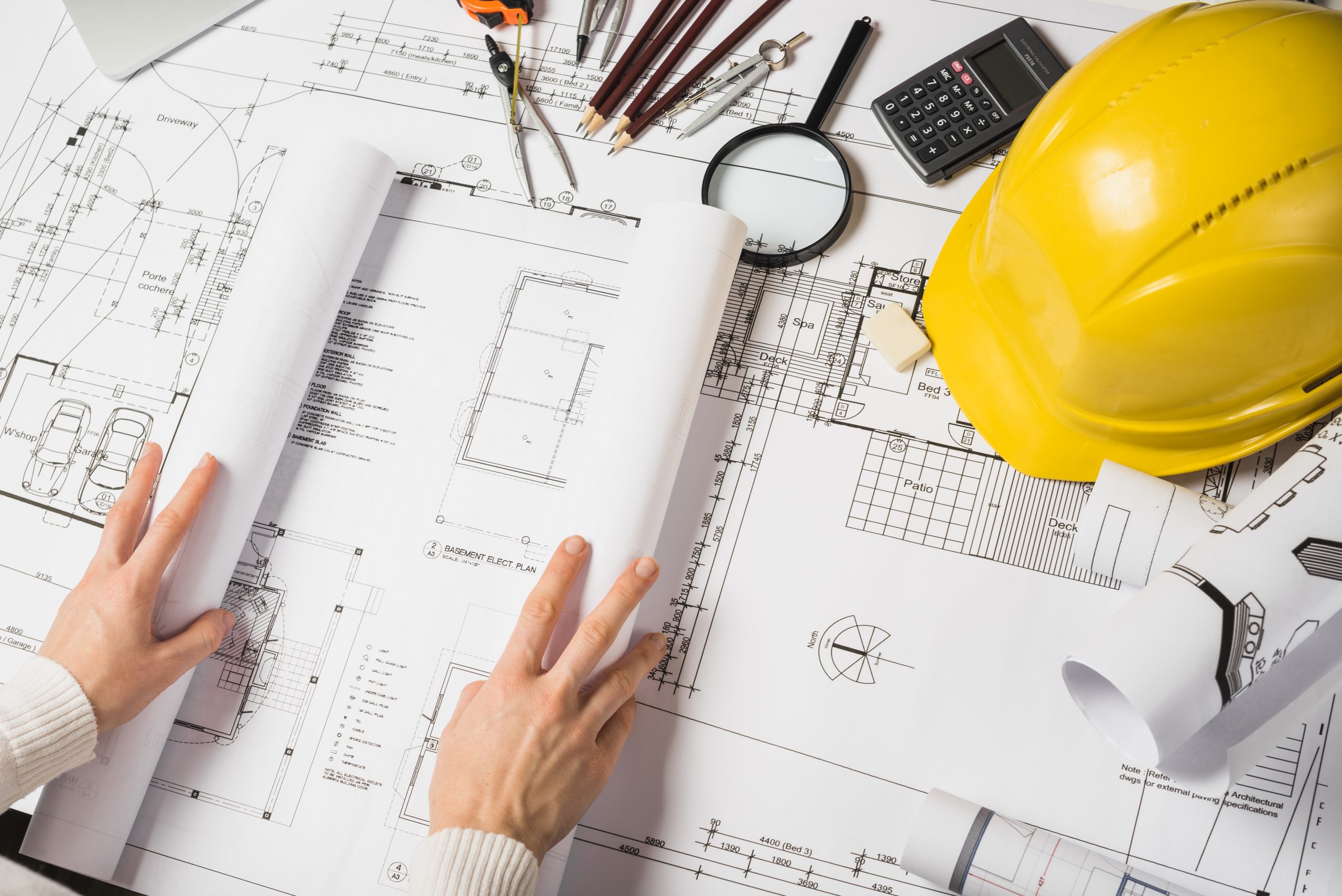Architect Guide to Eco-Friendly Building Materials
Architect Guide to Eco-Friendly Building Materials
Blog Article
Comprehending the Diverse Job Paths Available for Aspiring Architect
As an aspiring Architect, you have a globe of occupation courses waiting for you. Each path provides distinct obstacles and chances to apply your creative thinking and technical expertise. Whether you're attracted to traditional architecture or the subtleties of lasting layout, there's a particular niche that lines up with your passions. Recognizing these diverse alternatives can shape your expert journey, however which instructions will you choose to discover first?
Traditional Style: Creating Structures and Structures
Traditional design focuses on making structures and frameworks that mix performance with aesthetic charm. As you discover this field, you'll value the complex equilibrium between form and objective. You'll find out to draw ideas from historic designs, including components like symmetry, products, and craftsmanship. Your layouts can reflect cultural heritage, showcasing local customs while meeting modern-day demands.
You'll create skills in drafting, model-making, and site analysis, permitting you to picture and communicate your concepts properly. Involving with clients, you'll need to understand their vision and equate it into possible designs.
Additionally, constructing codes and sustainability techniques are crucial in your job, ensuring your structures are ecologically friendly and risk-free. As you expand in your occupation, you'll locate chances in residential, business, or perhaps remediation projects, each offering distinct challenges. Welcoming standard architecture paves the way for a satisfying career that admires the past while shaping the future.
Urban Planning: Shaping Communities and Public Spaces
As an ambitious Architect, you can play a vital role as a city coordinator, changing just how neighborhoods work and communicate. By using area engagement methods, you'll assure that citizens have a voice in shaping their atmosphere. Plus, incorporating lasting style principles will assist develop areas that not just satisfy today's requirements but likewise safeguard the future.
Duty of Urban Planners
While many could think about architects as the single dreamers behind buildings, urban organizers play a vital duty in shaping the broader landscape of communities and public spaces. They examine land use, zoning legislations, and community requires to create sustainable atmospheres that boost quality of life. By collaborating with different stakeholders, you'll assist design parks, transport systems, and domestic locations that advertise social communication and access. Urban planners likewise focus on ecological considerations, making sure that growths incorporate environment-friendly rooms and assistance biodiversity. Your know-how in spatial design and area dynamics enables you to visualize future development while preserving social heritage. In this essential function, you'll directly influence exactly how people experience their surroundings, making every project a possibility for favorable adjustment.
Neighborhood Involvement Methods
Reliable neighborhood engagement strategies are vital for urban organizers to guarantee that the voices of citizens are heard and valued in the preparation procedure. To promote meaningful discussion, you should focus on open online forums and workshops where neighborhood participants can share their concepts and issues. By actively listening and including responses, you'll produce rooms that reflect the community's needs, inevitably leading to even more successful and sustainable metropolitan environments.
Lasting Design Principles
When developing city rooms, including sustainable design principles is crucial for developing settings that prosper both environmentally and socially. Consider incorporating eco-friendly areas, like parks and gardens, to boost biodiversity and enhance air top quality.
Designing with water conservation in mind is additionally key-- think of rain yards and permeable surface areas to handle stormwater. Entailing neighborhood members during the preparation process guarantees that the spaces you produce satisfy their needs and urge social communication. By accepting these principles, you'll contribute to vivid, sustainable urban landscapes that benefit everybody.

Landscape Style: Developing Sustainable Outdoor Environments
As you discover landscape style, you'll uncover important style principles that create gorgeous and useful outdoor rooms. Lasting practices play a vital role in making certain these environments grow while lessening environmental impact. And also, you'll locate a variety of profession possibilities that enable you to make a real difference in exactly how people communicate with nature.
Layout Principles in Landscape
Understanding design concepts in landscape design is important for creating lasting outside atmospheres that harmonize with nature. You'll require to contemplate aspects like equilibrium, scale, and percentage to ensure your designs really feel natural and inviting. Incorporating indigenous plants not just boosts biodiversity however likewise lowers water usage, making your landscape durable. Think of the flow of area and just how individuals interact with it; pathways and seating areas must invite exploration and leisure. In addition, pay focus to seasonal adjustments, creating with materials that complement the surroundings year-round (Architect). By focusing on sustainability and appearances, you can create exterior rooms that enrich the community and advertise well-being. Accepting these principles will establish a solid foundation for your job in landscape style.
Sustainable Practices Overview
Lasting techniques in landscape style not just concentrate on visual appeals however also prioritize ecological wellness and resource preservation. You can make spaces that promote soil wellness, such as exercising and making use of organic materials permaculture concepts. Ultimately, these methods ensure your layouts profit both people and the setting for years to come.
Profession Opportunities Exploration
With a strong structure in lasting practices, landscape style provides a range of occupation courses that allow you to make a purposeful influence on the atmosphere. You might work as a landscape developer, creating cosmetically pleasing and practical outdoor areas, or concentrate on environmental reconstruction, aiding to revitalize damaged ecological communities. Urban organizers frequently work together with landscape engineers to develop environment-friendly rooms in urban setups, enhancing city livability. If you're passionate concerning education and learning, consider coming to be a landscape style instructor, inspiring future generations. Furthermore, you could function with nonprofits concentrated on ecological sustainability or participate in research to introduce brand-new techniques. Each course not only shapes beautiful settings yet additionally promotes a much healthier world for future generations.
Sustainable Design: Focusing on Eco-Friendly Practices
As you explore your profession in design, embracing eco-friendly methods can establish you apart in a competitive area. Sustainable layout concentrates on developing buildings that decrease environmental effect while enhancing occupant health. By including renewable materials, energy-efficient systems, and lasting building strategies, you'll contribute to a greener future.
Beginning by obtaining understanding of eco-friendly accreditations like LEED or BREEAM, which can reinforce your credentials. Consider how natural light, air flow, and thermal performance can maximize style. Collaborate with engineers and ecological experts to introduce remedies that lower waste and preserve resources.
Do not neglect the importance of neighborhood involvement-- interesting neighborhood stakeholders can motivate styles that balance with the atmosphere. As customers increasingly focus on sustainability, your experience in eco-friendly techniques will not only bring in tasks yet also accomplish your enthusiasm for responsible style. Welcome this critical facet of the career, and see your occupation prosper.
Historical Conservation: Safeguarding and Bring Back Cultural Heritage
While you begin on your building journey, think about the necessary duty of historic conservation in maintaining our cultural heritage. This field concentrates on the protection and remediation of considerable structures, sites, and structures that inform the tales of our past. By engaging in historical conservation, you'll help safeguard the building tradition that shapes community identification.
As a historic preservation Architect, you'll evaluate historical significance and assess the condition of structures. You'll function very closely with guardians and click over here now chroniclers to assure authentic repair methods are used. This profession course allows you to mix imagination with research, allowing you to develop services that respect original products and workmanship.
Your job not just adds to sustainability by reusing existing buildings however also promotes a feeling of pride within communities. Accepting this path will certainly aid you come to explanation be a guardian of history, preserving the tales and aesthetics that improve our lives.
Inside Design: Enhancing Indoor Spaces
Historic preservation and interior style both share a dedication to boosting the built environment, however they concentrate on various facets. While historical conservation emphasizes preserving a structure's social and historic value, interior design zeroes in on maximizing interior areas for capability and looks.
As a hopeful Architect, you'll find that interior architecture allows you to mix creativity with technological skills. You'll develop spaces that not just look great however also promote convenience and effectiveness. This area entails understanding just how light, color, and products interact within a space, impacting state of mind and usability.
You'll work on different jobs, from property homes to industrial workplaces, ensuring that each environment fulfills the demands of its owners. By prioritizing customer experience, you can change insides into motivating and useful rooms, making a considerable impact on exactly how individuals connect with their environments. Welcome the chance to enhance indoor settings and form the method people work and live.
Industrial Design: Combining Performance With Appearances
Commercial style plays an essential duty in producing items that perfectly mix visual appeals with capability, making sure that what you utilize daily is not just aesthetically attractive yet additionally functional. As an aspiring Architect, you can engage yourself in this field, focusing on creating every little thing from furniture to customer electronic devices. Your work entails recognizing individual demands, products, and making processes, permitting you to produce cutting-edge solutions that boost everyday experiences.
In industrial style, you'll typically team up with designers, marketing experts, and makers, making certain that your styles are not only gorgeous yet likewise practical. You'll find out to stabilize form and feature, prioritizing usability without giving up style. By refining your skills in laying out, 3D modeling, and prototyping, you'll be well-equipped to bring your ideas to life. This occupation path uses a vibrant environment where imagination meets practicality, making it a rewarding selection for designers curious about forming the items of tomorrow.
Regularly Asked Inquiries
What Educational Qualifications Do I Required to Become a Designer?
To become an architect, you'll require an expert level in architecture, usually a Bachelor's or Master's. Furthermore, you'll need to finish a teaching fellowship and pass the Architect Enrollment Examination to practice legitimately.
Are There Accreditation Requirements for Different Building Profession Paths?
Yes, there're accreditation demands for numerous building courses. Architect. You'll require to pass examinations, total internships, and try this web-site sometimes go after specialized training, depending upon your chosen focus, like landscape architecture, urban design, or historic preservation
What Software Program Skills Are Crucial for Architects Today?

Exactly How Can I Gain Practical Experience While Researching Design?
You can acquire practical experience by interning at building firms, participating in style competitions, volunteering for neighborhood tasks, or working together with classmates on real-world assignments. These possibilities boost your abilities and develop beneficial connections in the industry.
What Task Opportunities Exist Outside Conventional Style Firms?
You can explore different job opportunities outside conventional style firms, like city planning, interior design, landscape architecture, building monitoring, realty growth, or perhaps roles in sustainability consulting. Each deals one-of-a-kind challenges and rewards.
Whether you're drawn to conventional architecture or the nuances of sustainable layout, there's a specific niche that straightens with your rate of interests.When designing urban spaces, integrating sustainable layout concepts is important for producing environments that flourish both environmentally and socially.As you discover landscape design, you'll discover important layout principles that develop useful and lovely outdoor spaces.Understanding layout concepts in landscape style is crucial for developing lasting outdoor settings that balance with nature.In commercial style, you'll usually work together with suppliers, marketing professionals, and designers, ensuring that your designs are not only lovely however also viable.
Report this page